Learn how to make Ashta cream at home in under half an hour (active time)! This shortcut recipe is easy anyone can make it. It creates a thick and creamy Ashta cream that can be used as a topping, or to stuff pastries or other Middle Eastern desserts.
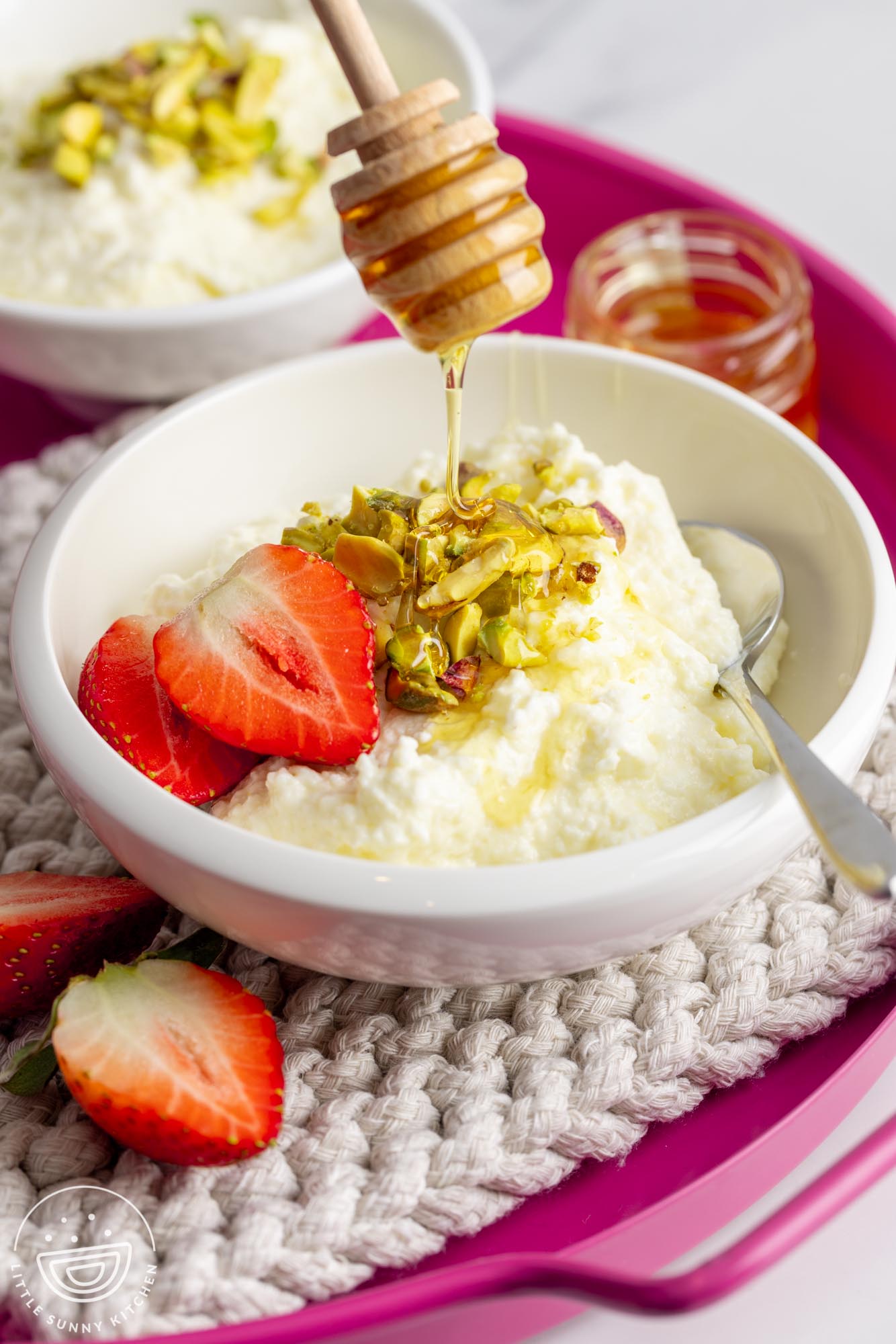
What is Ashta Cream?
Homemade Ashta or Qishta is a type of Middle Eastern clotted cream that can be served on its own, with honey, fresh fruit, and nuts, or stuffed or topped on other pastries and desserts such as Layali Lebnan, Eid el Saraya, Halawet el Jibn, Warbat, Ashta ice cream, and many more!
Homemade Ashta cream is thick, rich, and creamy. It is important to note that this is not an authentic recipe for Ashta Baladeye. The real thing is made by boiling milk and skimming off the thin skin that forms on the surface, a labor-intensive process that takes long hours. Instead, we use this quick and easy shortcut recipe that is almost as good as the real thing.
Ashta’s texture is similar to mascarpone cheese, but a little creamier. If desired, you can either leave the milk curds in or blend them until smooth to get a whipped cream consistency.

Why You’ll Love Homemade Ashta Cream
- Easy – This homemade Ashta cream recipe is very easy to make! I include step-by-step images to show you exactly how to make this delicious treat.
- Smooth or Chunky – I’m showing you how to make a smooth Ashta cream with or without milk curds or keep it chunky like the ones you see in my pictures.
- Simple Ingredients – Lebanese Ashta requires just a few basic ingredients to make it. I’ve also included substitutions, and optional flavoring ideas if you wish to add that.
Easy Homemade Ashta Ingredients
Here’s what you need to make the best homemade Ashta:
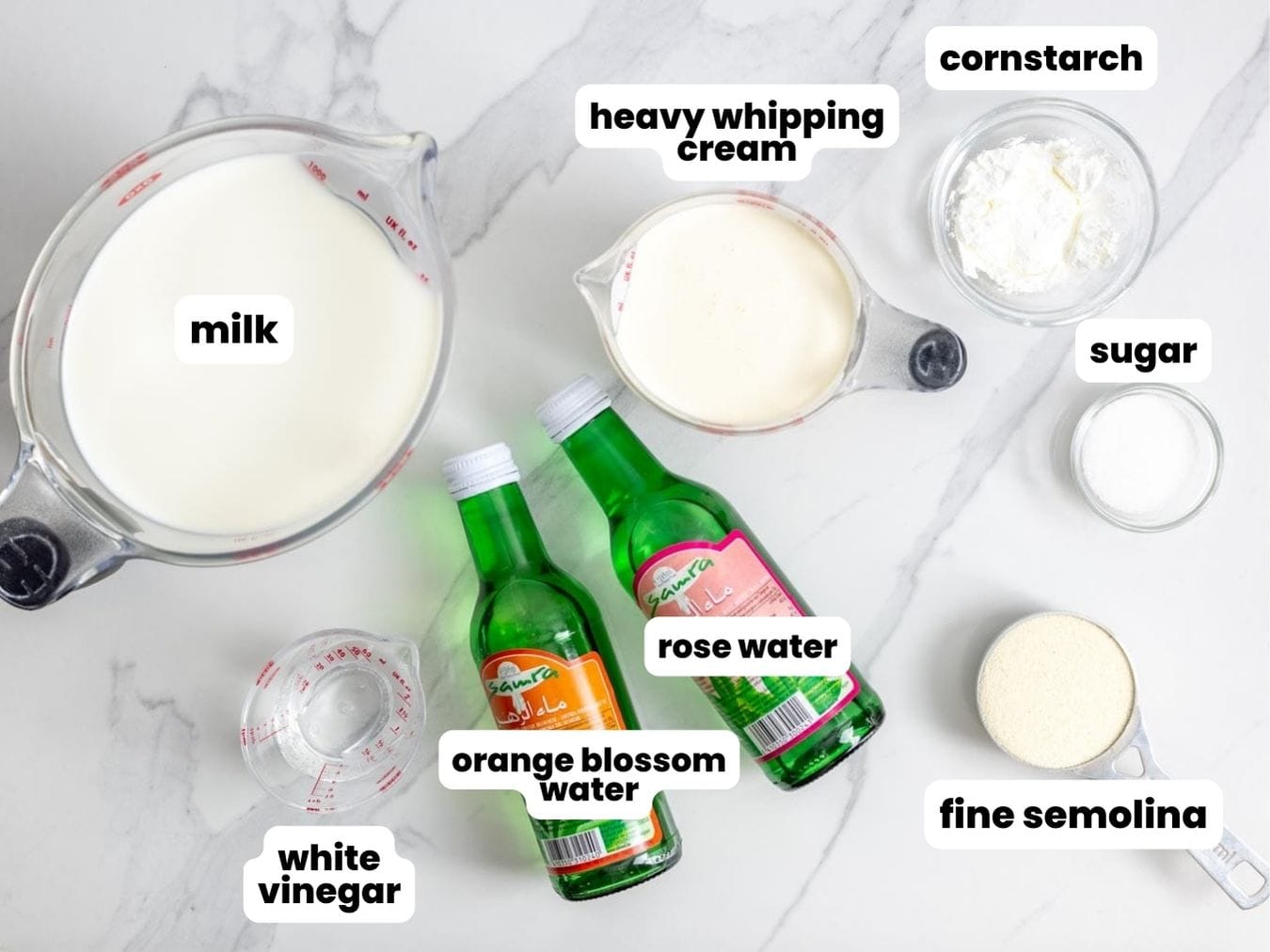
Complete list of ingredients and amounts can be found in the recipe card below.
- Whole Milk and Heavy Whipping Cream: Do not try to use low-fat milk in this recipe. Also, be sure to avoid any milk or cream that says “ultra-pasteurized” or “UHT” on the label.
- Vinegar: White vinegar or fresh lemon juice is used to turn the milk into cheese.
- Extra Fine Semolina and Cornstarch: These two thickeners make the mixture smooth and cream-like. Semolina can be substituted with crustless white bread or all-purpose flour.
- Flower Waters: These ingredients are totally optional. You can leave the cream plain just like the real thing, or flavor it with rose or orange blossom water.
How To Make Ashta Cream

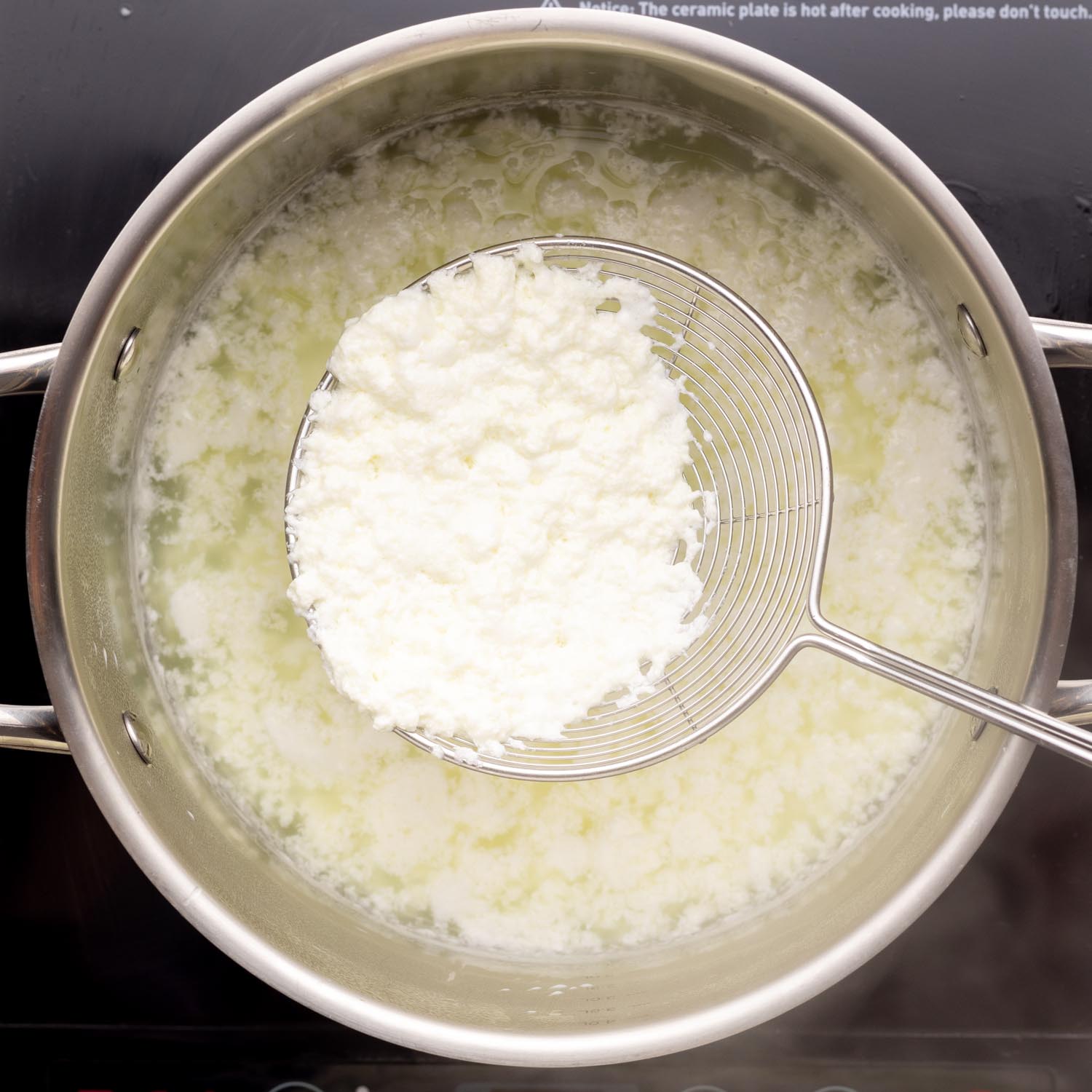

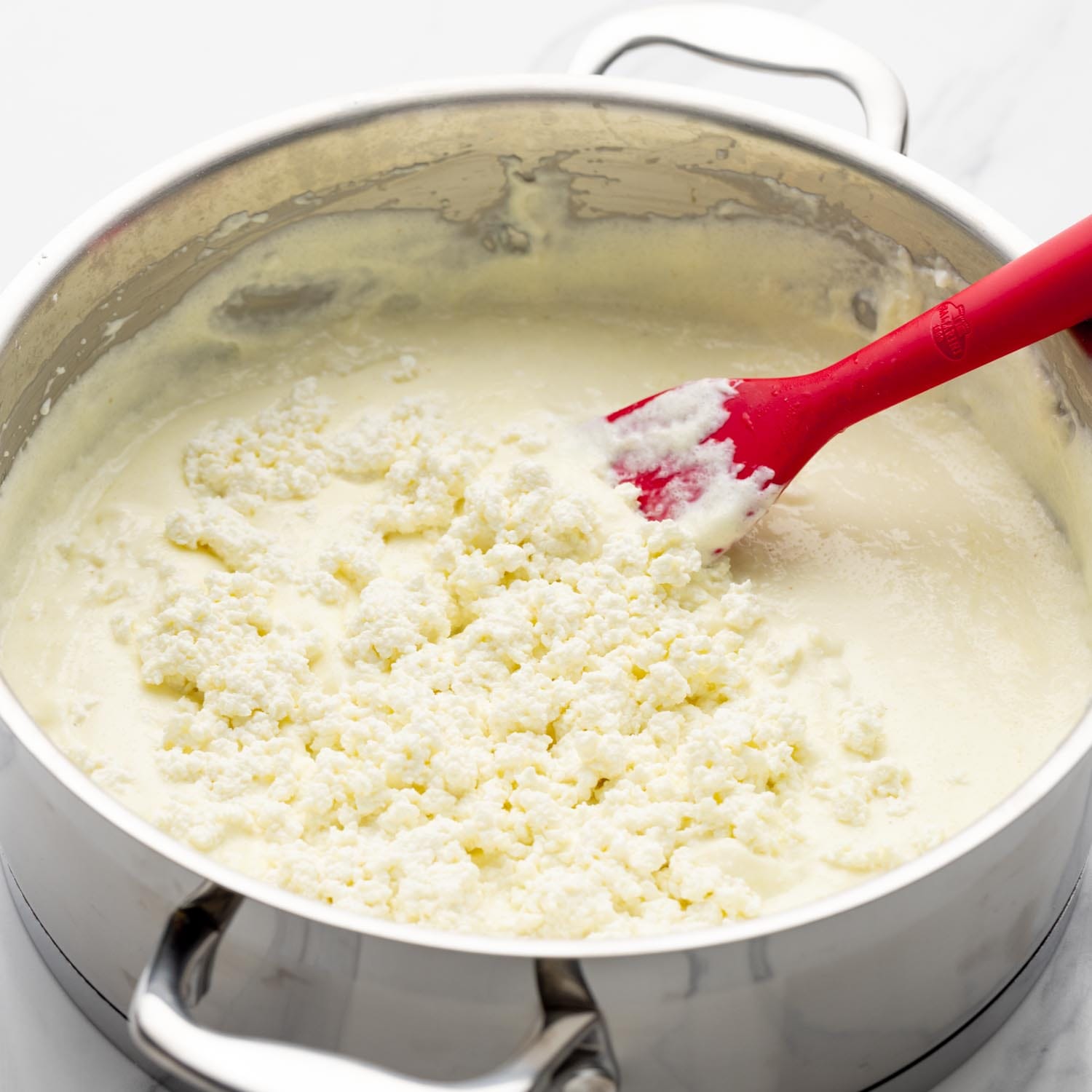
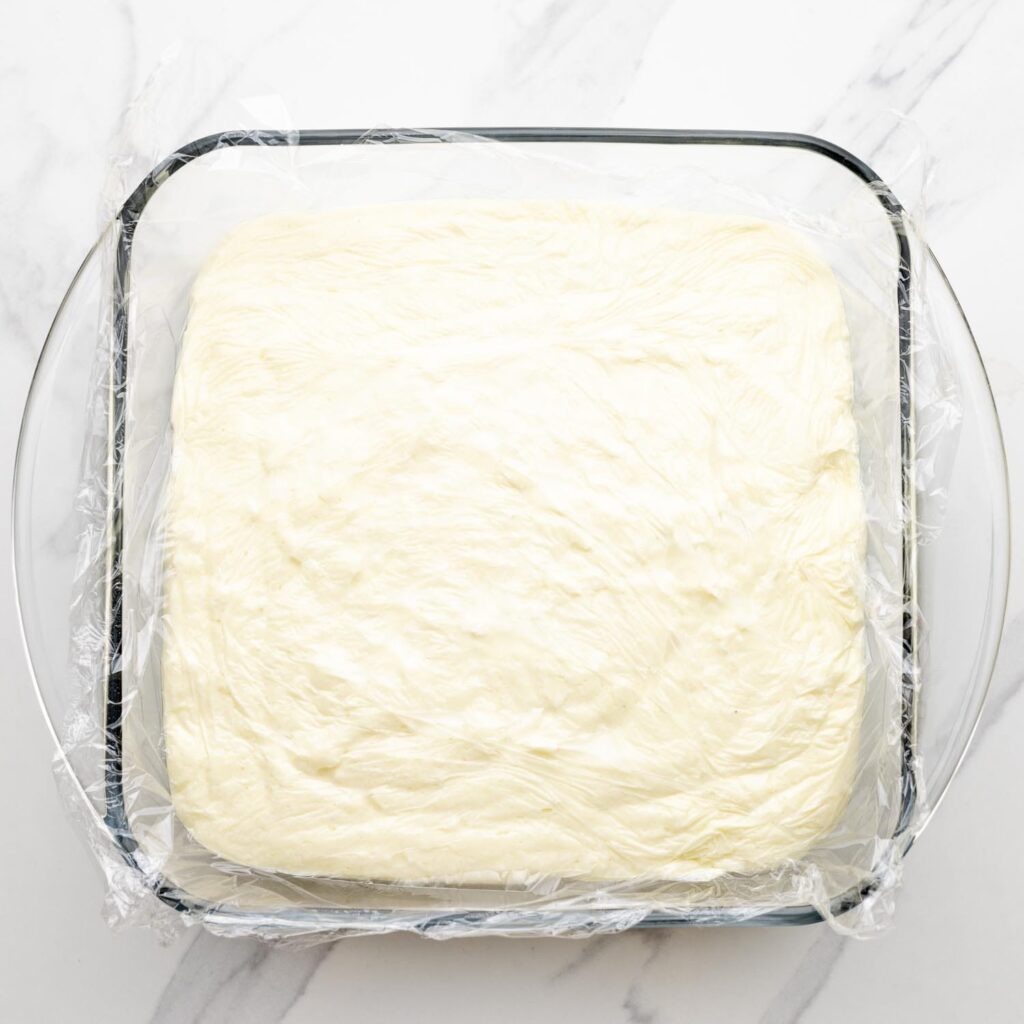
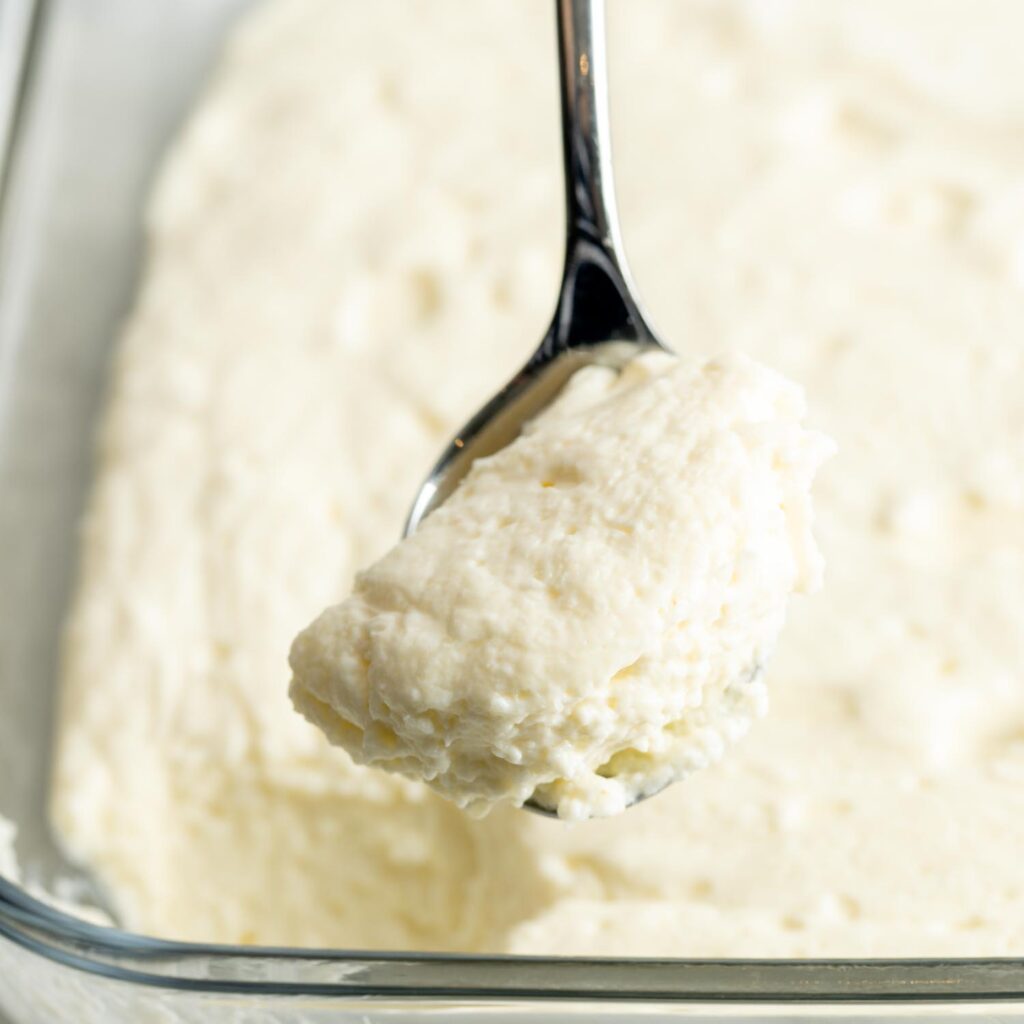
Tip!
Always give the chilled Ashta a stir or a whisk before serving. This will ensure that it has the right texture.
Recipe Tips
- Shortcut: You can skip making your own milk curds, and use half a cup of either mascarpone or ricotta cheese instead.
- Keep Stirring: Do not walk away from the stove when you make this! Like Lebanese Rice Pudding, the milk needs to be stirred continuously in the saucepan as it’s heated up to avoid burnt milk at the bottom of the pot.
- Make it Smooth: If you want your Ashta completely smooth, blend it in a blender before chilling, then cover it with plastic wrap and chill.
- Add More Flavor: If desired, Ashta can be flavored with orange blossom or rose water to taste. This is totally optional but can be a nice addition to some desserts.
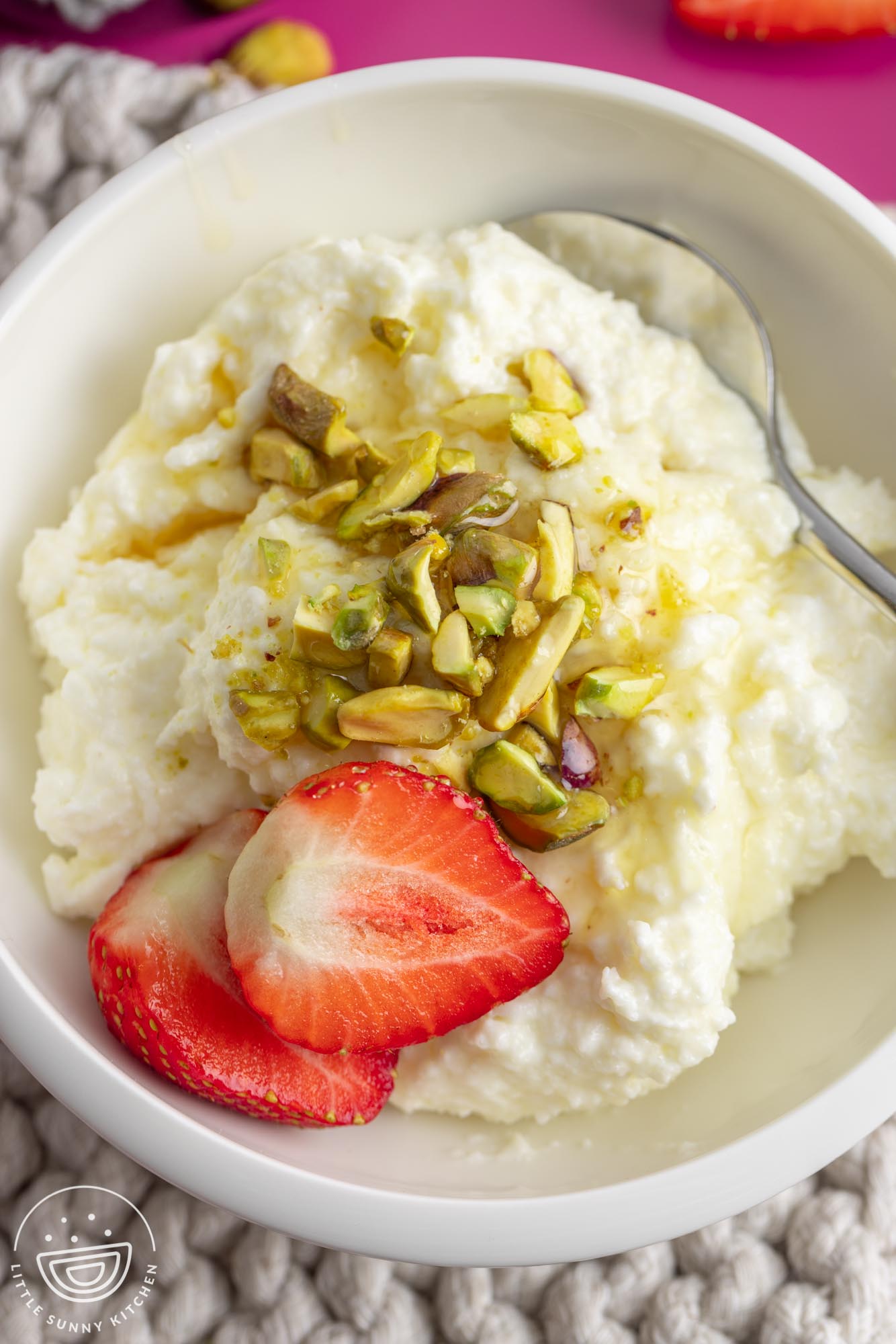
Storing Tips
Store homemade Ashta in the fridge, covering it with plastic wrap directly on the surface of the cream; this will prevent a skin from forming on top. It can be stored in the fridge for up to 10 days.
I do not recommend freezing Ashta as the texture will change, and it won’t be as creamy.
How to Use Ashta Cream
Ashta is served as a dessert or in a dessert. It is often enjoyed with a drizzle of honey, fresh fruit (strawberry, banana, mango, kiwi…), and nuts like cashews and pistachios as a garnish. It also goes into a variety of Middle Eastern desserts, such as:
- Atayef (Qatayef) is stuffed with Ashta and then fried.
- Halawet El Jibn
- Layali Lubnan, semolina layer topped with Ashta and Atir sugar syrup.
- Aish el Saraya, toasted bread that is soaked in Atir sugar syrup, topped with Ashta.
- Warbat aka Shabiyaat, Ashta wrapped in phyllo dough then oven baked and soaked in Atir sugar syrup.
- Lebanese Fruit Cocktail
Enjoy making and eating this homemade Ashta with your favorite Arabic Desserts! If you try this, don’t forget to share your experience in the comments section below and add a recipe rating too. I love hearing from you!
Did you make this? Be sure to leave a review below and tag me on Facebook, Instagram, or Pinterest!
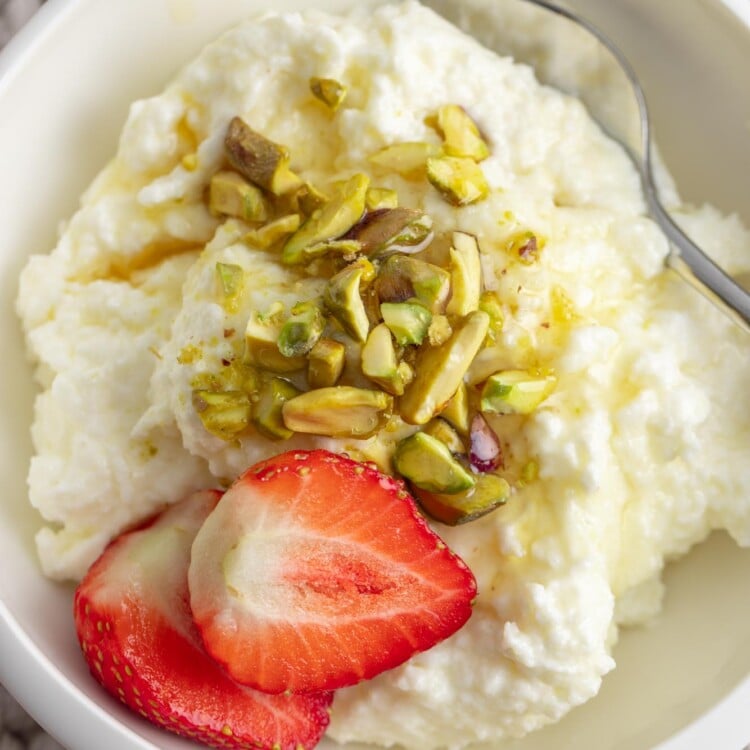
Ashta Recipe
Equipment
- Large pot
- Fine mesh strainer
- Plastic wrap
Ingredients
Milk Curds (Aresheh):
- 4 cups (960 ml) whole milk pasteurized, but not ultra-pasteurized/UHT
- 2 tablespoons (30 ml) white vinegar or lemon juice
Ashta:
- ¼ cup (45 g) fine semolina
- 2 tablespoons (20 g) cornstarch
- 1 tablespoon (12 g) granulated sugar optional
- 3 cups (720 ml) milk whole or 2%
- 1 teaspoon (5 ml) orange blossom water optional
- 1 teaspoon (5 ml) rose water optional
Instructions
Milk Curds:
- Add the milk to a large pot over medium-high heat.
- Keep stirring the milk to prevent scorching. Allow it to reach 195°F/90°C, (a candy thermometer is very helpful here); it’s important that it does not boil.
- Add the vinegar, give it a stir, and turn off the heat. Now leave the mixture to rest and separate into curds and whey for 5 minutes WITHOUT stirring.
- Strain the milk curds with a fine mesh sieve, and allow to cool completely.
Cream:
- In a large pot over medium heat, combine the semolina with cornstarch, sugar, and milk. Whisk to combine until no lumps remain.
- Bring the mixture to a boil as you keep stirring the mixture, then cook for 3 more minutes or until the mixture has thickened.
- Remove from heat, and mix in orange blossom and rose waters if desired.
- Add the milk curds to the cream mixture, and combine.
- Transfer to a glass dish or bowl, and cover with plastic wrap directly on the cream to avoid forming a skin. Allow to cool completely, then chill in the fridge for at least 2 hours before using. Whisk before using.
Notes:
- Stir Continuously: Keep stirring the milk while heating to prevent burning.
- Use Full-Fat Milk: Do not use low-fat or ultra-pasteurized/UHT milk or cream.
- Optional Cheese Shortcut: Instead of making milk curds, use ½ cup mascarpone or ricotta cheese.
- Smooth Texture: For smooth Ashta, blend before chilling. Remember to stir or whisk before serving.
- Flavor Addition: Optionally, flavor with orange blossom or rose water.
- Refrigeration: Store by covering with plastic wrap directly on the cream to prevent skin formation, for up to 10 days in the fridge.
- No Freezing: Freezing changes the texture, making it less creamy.
Nutrition Information
This website provides approximate nutrition information for convenience and as a courtesy only. Nutrition data is gathered primarily from the USDA Food Composition Database, whenever available, or otherwise other online calculators.
© Little Sunny Kitchen
Frequently Asked Questions
What is Ashta Made Of?
Traditionally, Ashta is made from milk. It is gently boiled, and a thin skin forms on the surface of the milk. Then, it’s skimmed off and separated from the whey. Homemade Ashta mimics the authentic flavor and texture by mixing milk curds with homemade cream, usually thickened with semolina, cornstarch, or white crustless bread.
Can I use low-fat milk to make Ashta?
For the creamiest texture, it’s best to use full-fat milk. Low-fat milk doesn’t achieve the same richness.
Is there a shortcut to making Ashta?
Yes, for a quick version, you can use mascarpone or ricotta cheese mixed with a thickening cream, skipping the milk curd process. You can also make the milk curds, and mix them with whipped cream for a similar effect.

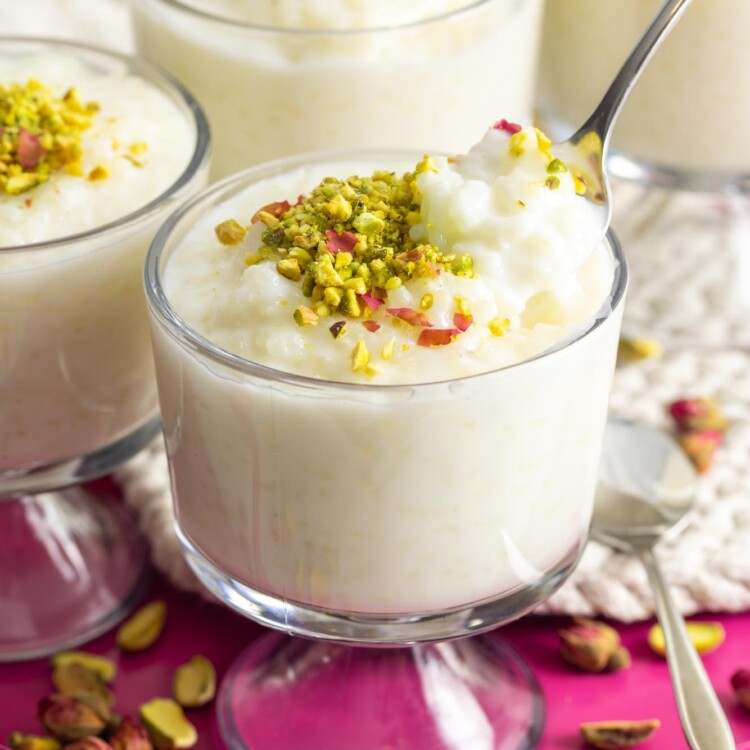
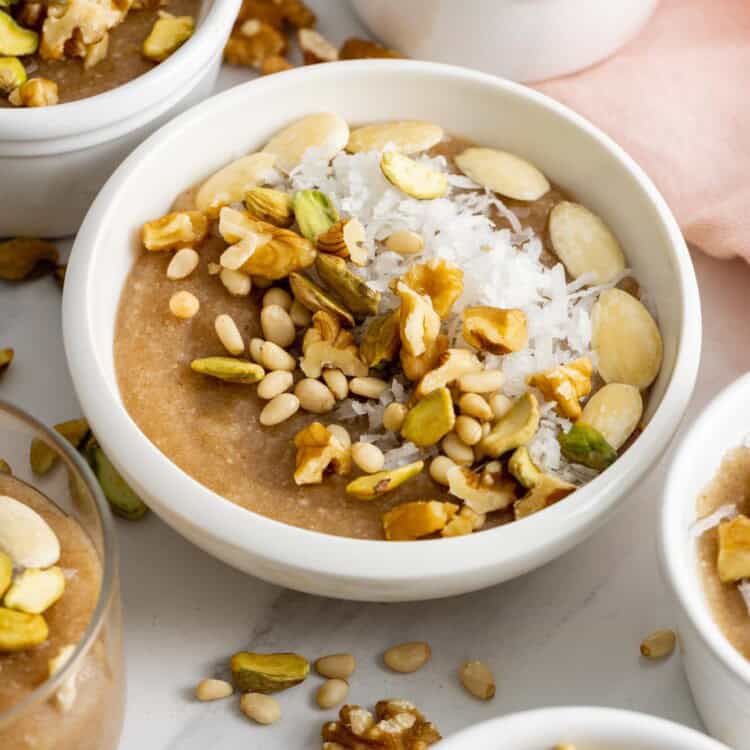
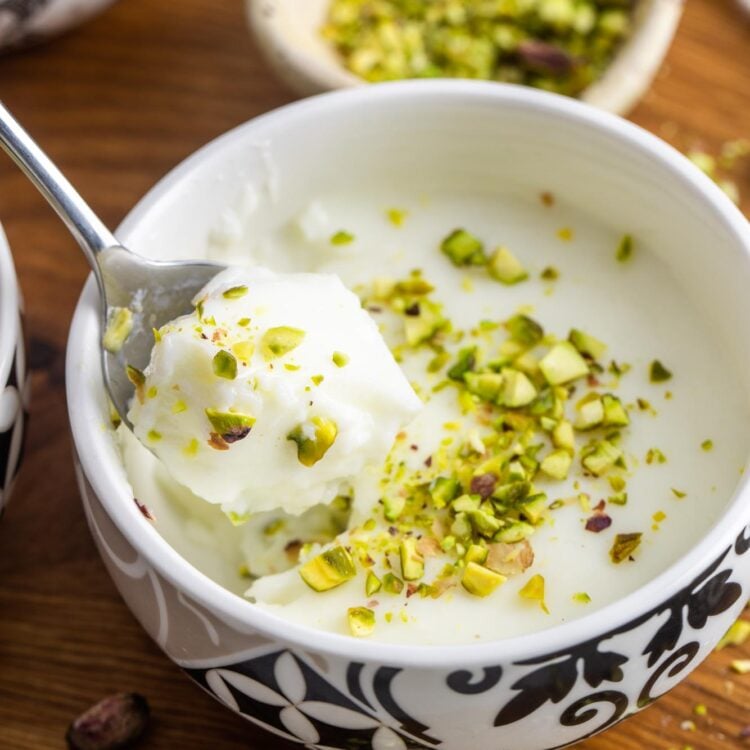
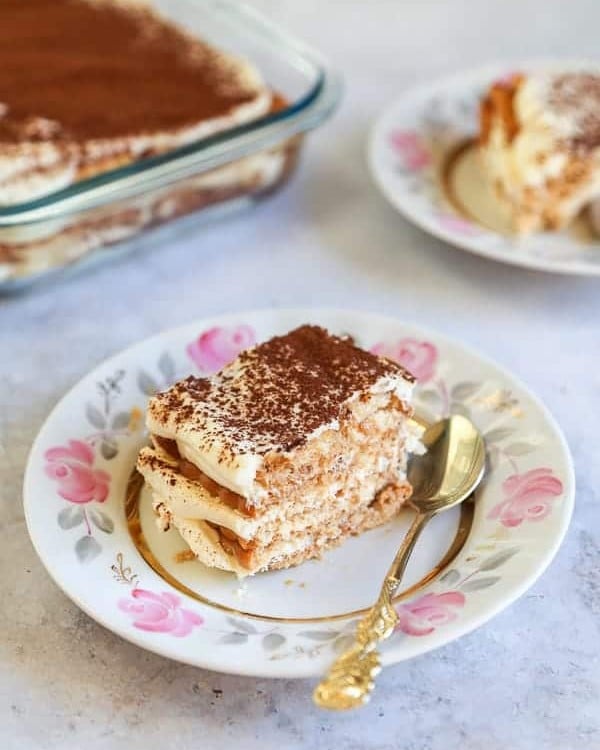
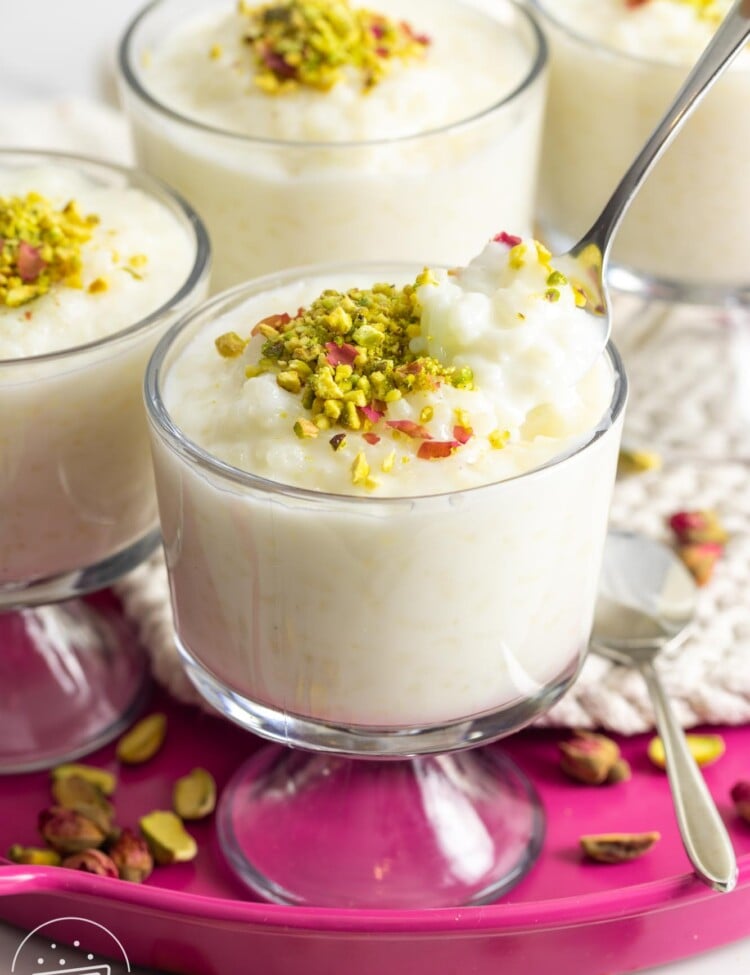
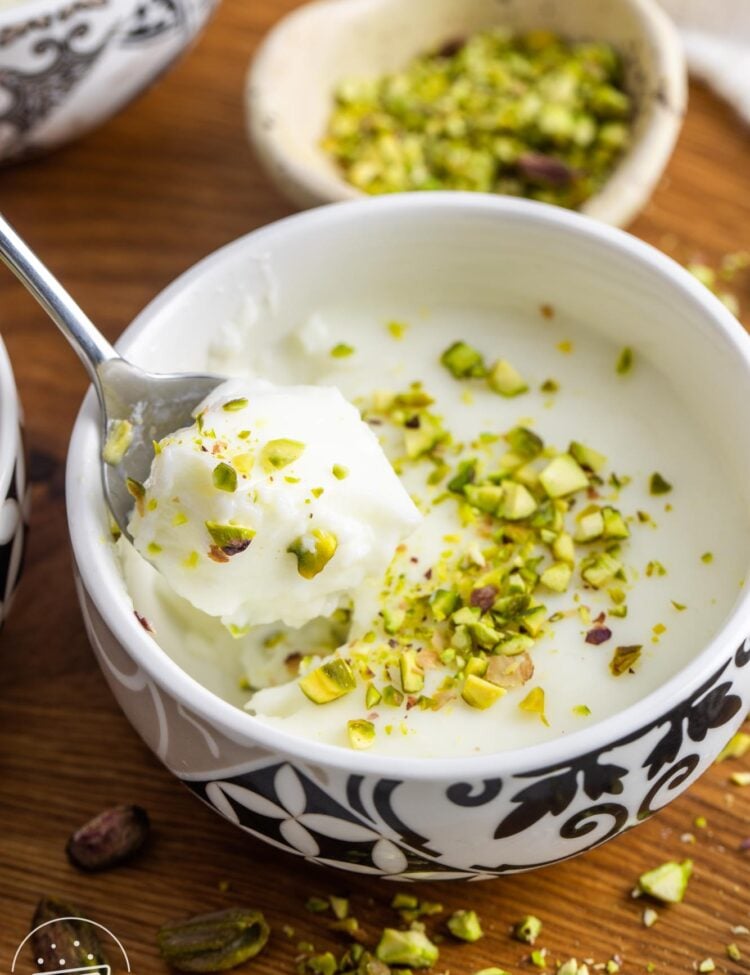

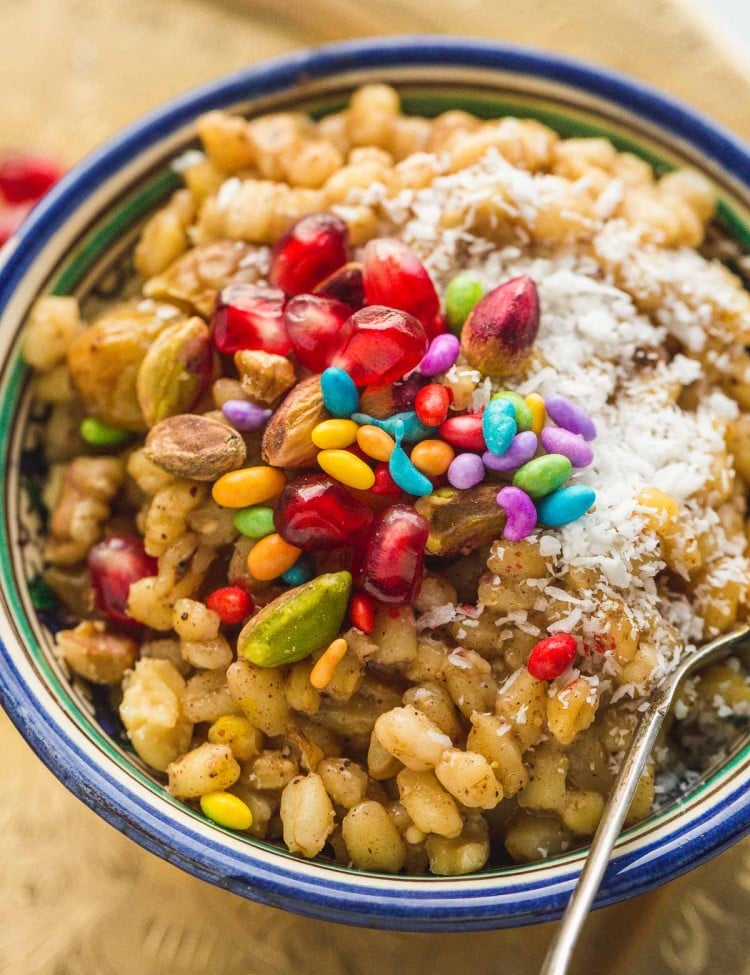

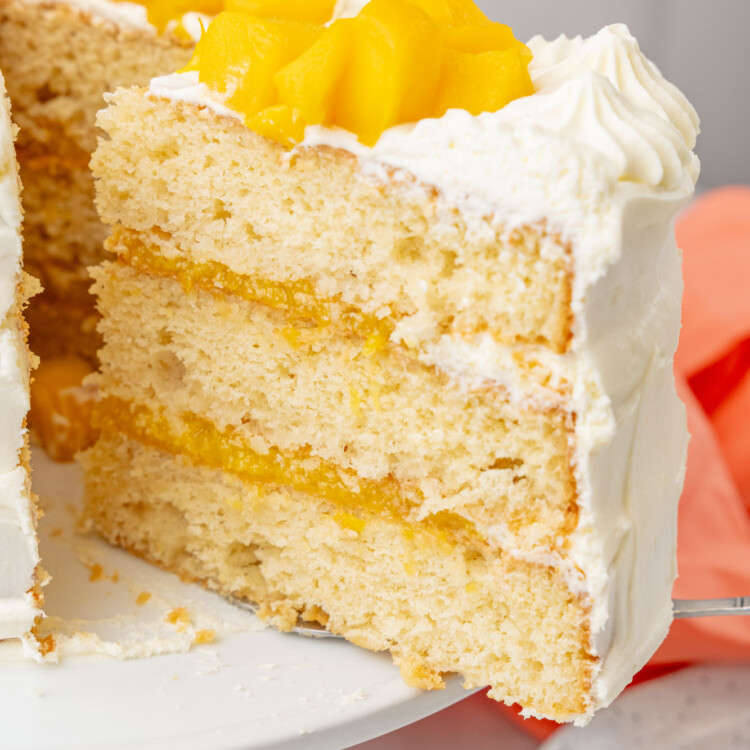
Leave a Review!